- Introduction
- The Dohany Street Synagogue - A Masterpiece of Jewish Architecture
- The Jewish Museum and Holocaust Memorial Center
- The Kazinczy Street Synagogue and the Jewish Quarter
- The Rumbach Street Synagogue
- The Shoes on the Danube Bank
- The Jewish Historical Museum
- Jewish Community Today
- Conclusion
Introduction
Budapest is a city rich with history, and one of the most significant aspects of its cultural heritage is its vibrant Jewish community. Despite the many hardships that the Jewish population has faced, including the devastation of the Holocaust, Jewish culture in Budapest has endured and thrives today. Visitors to Budapest can explore various Jewish landmarks and learn about the profound impact the Jewish community has had on the city’s history, culture, and architecture. Here’s a detailed look at the must-visit Jewish attractions in Budapest, offering a comprehensive glimpse into the city’s Jewish heritage.
The Dohany Street Synagogue - A Masterpiece of Jewish Architecture

The Dohány Street Synagogue (also known as the Great Synagogue) is not only the largest synagogue in Europe but also one of the largest in the world. It stands as a majestic symbol of Jewish resilience and a testament to the community’s longstanding presence in Hungary.
Completed in 1859, the synagogue was designed by Viennese architect Ludwig Förster, who blended Moorish, Byzantine, and Romantic architectural elements. Its striking twin towers, large enough to hold over 3,000 worshippers, and the richly decorated interior are unparalleled. The exterior’s ornate façade is reminiscent of the Alhambra in Spain, showcasing intricate brickwork and geometric designs, which reflect both Jewish and Islamic artistic influences.
One of the unique aspects of the Dohány Street Synagogue is its organ. The presence of an organ is rare in synagogues, but it highlights the Neolog branch of Judaism practiced here, which adopted more modern, reformist elements. The synagogue has hosted numerous world-renowned musicians, including Franz Liszt, who played the organ during performances.
The Jewish Museum and Holocaust Memorial Center
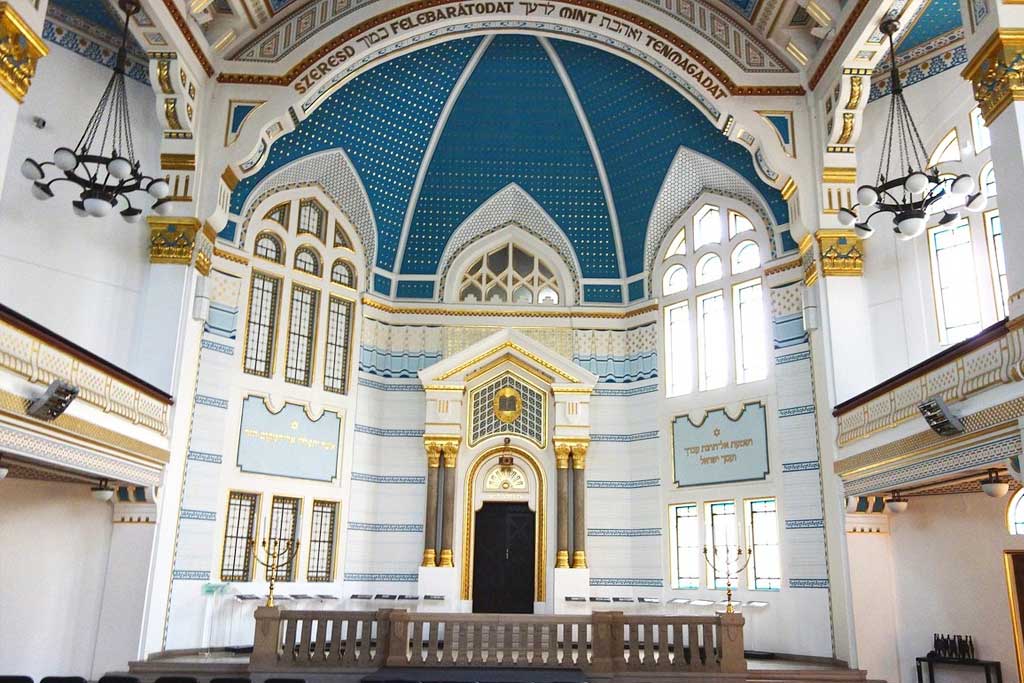
Adjacent to the Dohány Street Synagogue is the Jewish Museum, which is another must-visit for anyone interested in Jewish history. The museum offers a comprehensive look at Jewish life in Hungary, from religious practices to everyday customs. The museum’s collection includes religious artifacts, textiles, and historical documents, some of which date back hundreds of years.
One particularly moving exhibit in the museum is the Holocaust Memorial Center, which commemorates the Jewish victims of the Holocaust. The memorial is a sobering reminder of the atrocities faced by the Jewish community during World War II. Hungary lost nearly 600,000 Jews during the Holocaust, and the museum ensures that this tragic history is never forgotten. The Raoul Wallenberg Memorial Park, located behind the synagogue, includes a weeping willow sculpture called the Tree of Life, with each leaf inscribed with the name of a Holocaust victim.
The Kazinczy Street Synagogue and the Jewish Quarter
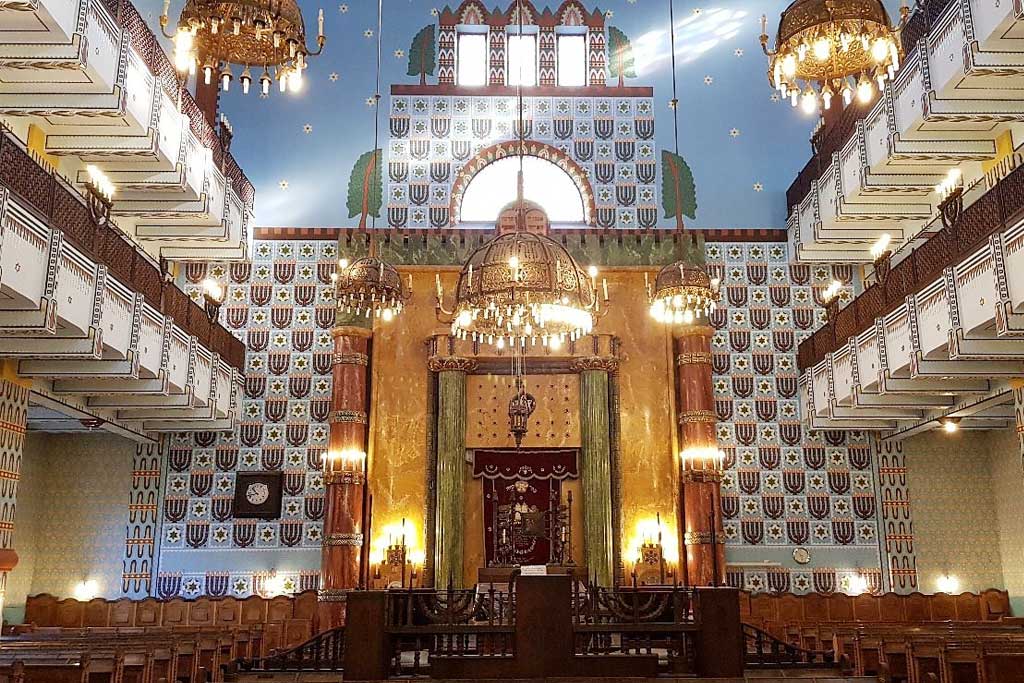
Another key synagogue to visit is the Kazinczy Street Synagogue, located in the heart of the Jewish Quarter (also known as the Erzsébetváros district). This synagogue, built in 1913, is a stunning example of Art Nouveau architecture. Its colorful stained glass windows, intricate woodwork, and beautifully painted ceilings make it one of the most unique synagogues in Europe.
The Jewish Quarter itself is a vibrant area full of history and culture. Once the center of Jewish life in Budapest, the quarter still has numerous kosher restaurants, bakeries, and shops selling Jewish artifacts. In addition, the neighborhood is home to several cultural festivals and events throughout the year, including the Jewish Cultural Festival, which attracts thousands of visitors.
A stroll through the Jewish Quarter offers a glimpse into the daily life of the Jewish community, past and present. In recent years, the area has also become known for its “ruin bars,” trendy spots located in abandoned buildings that have been turned into lively social spaces. These venues coexist alongside historical Jewish sites, adding a modern twist to the area’s rich history.
The Rumbach Street Synagogue
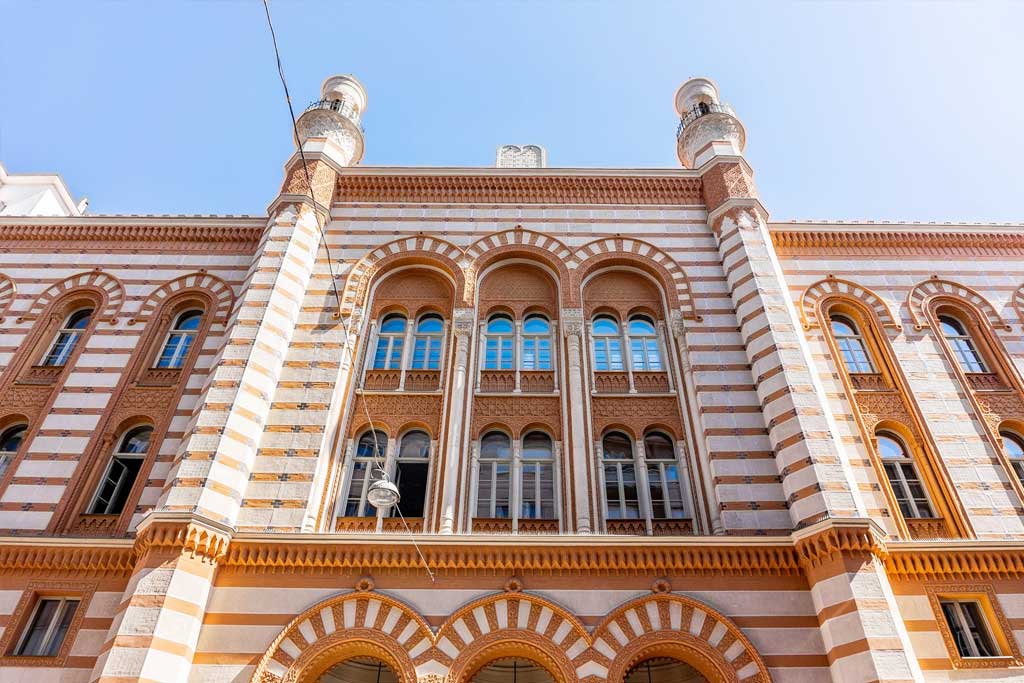
The Rumbach Street Synagogue is another architectural gem located in the Jewish Quarter. Built in 1872, it was designed by the Austrian architect Otto Wagner in an Orientalist style that mirrors the Moorish influences seen in the Dohány Street Synagogue. The Rumbach Synagogue was heavily damaged during World War II and fell into disrepair for many years, but recent restoration efforts have brought it back to life.
Today, the Rumbach Street Synagogue serves as a cultural and community space, hosting concerts, exhibitions, and other events that celebrate Jewish heritage. The synagogue’s beautiful interior features richly painted ceilings and walls adorned with geometric patterns, making it a stunning backdrop for cultural activities.
The Shoes on the Danube Bank
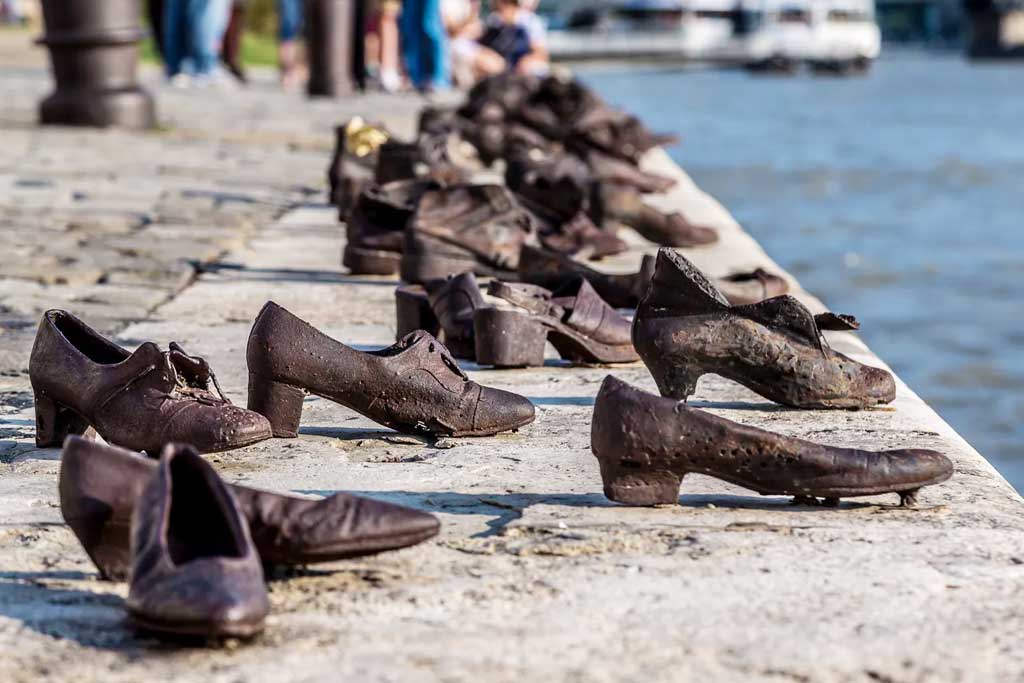
One of the most poignant memorials in Budapest is the Shoes on the Danube Bank, which honors the Jewish victims who were shot by the Arrow Cross militia during World War II. This simple yet powerful memorial consists of 60 pairs of iron shoes scattered along the edge of the riverbank, symbolizing the shoes that were left behind by the victims before they were forced into the Danube and killed. The memorial is a stark reminder of the horrors of war and the brutality faced by the Jewish community during the Holocaust.
Designed by Hungarian sculptor Gyula Pauer and film director Can Togay, the Shoes on the Danube is a haunting tribute to the thousands of Jews who lost their lives. Many visitors leave flowers or candles at the site, paying their respects to the victims of this dark chapter in history.
The Jewish Historical Museum
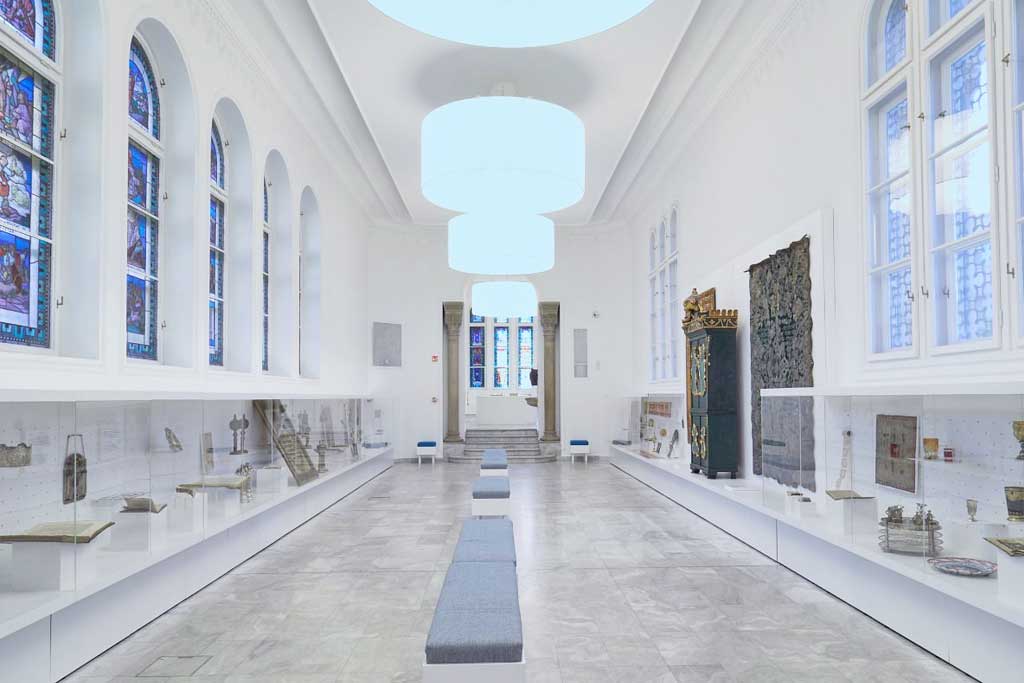
The Jewish Historical Museum, located next to the Dohány Street Synagogue, houses a vast collection of Jewish artifacts, manuscripts, and religious objects that document the history and culture of Hungarian Jewry. The museum’s exhibits cover various aspects of Jewish life, including religious traditions, cultural practices, and the history of the Jewish community in Hungary.
Visitors to the museum can see a wide range of objects, from ancient Torah scrolls to beautifully crafted menorahs. One of the highlights of the collection is a medieval Jewish gravestone, which is one of the oldest surviving Jewish artifacts in Hungary. The museum also has an extensive collection of documents related to the Holocaust, including personal letters, photographs, and other items that offer a glimpse into the lives of Hungarian Jews during this tragic period.
Jewish Community Today
Despite the challenges of the past, Budapest’s Jewish community remains active and thriving today. The Balint House, Budapest’s Jewish community center, is a hub of social and cultural activity. It offers a wide range of programs, including educational workshops, cultural events, and religious services, catering to Jews of all ages and backgrounds.
Many visitors to Budapest also choose to explore the Israeli Cultural Institute, which fosters connections between Hungary and Israel through cultural exchanges, educational programs, and events that highlight Israeli culture.
Conclusion
Budapest is a city where the past and present coexist harmoniously, and the Jewish community’s contribution to the city’s cultural and historical landscape is immeasurable. From the grand Dohány Street Synagogue to the humble Shoes on the Danube, these landmarks offer visitors a chance to reflect on the resilience and strength of the Jewish people. As you walk through the streets of Budapest, you are not only exploring a city but also engaging with centuries of Jewish history that continues to shape the city today. Whether you are interested in architecture, history, or cultural heritage, Budapest’s Jewish landmarks provide a deeply enriching experience.
